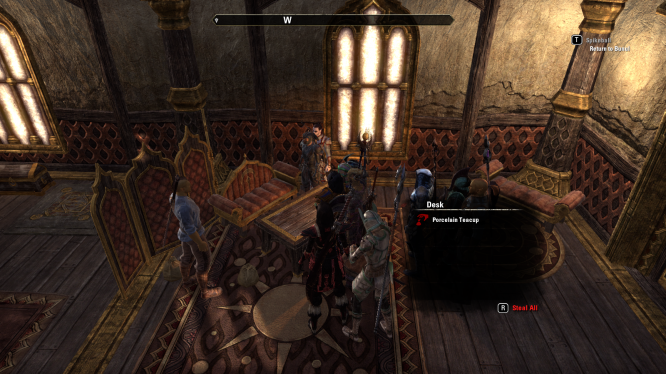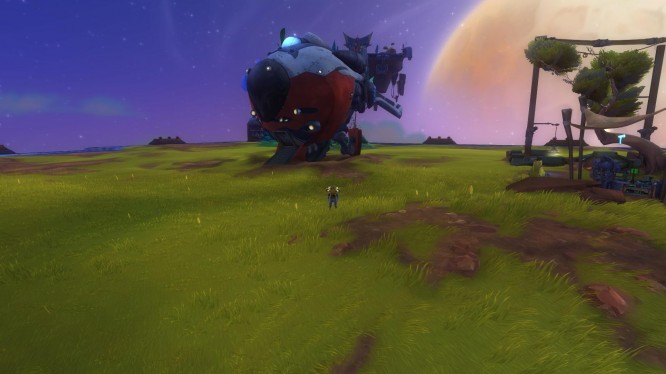

Although Destiny and Warframe might look like completely different games from far away, when you get into the details of each one you’ll quickly notice how similar the two actually are. Even though Destiny is a first-person MMORPG and Warframe is a third-person lobby MMO, the core mechanics of each game are very comparable. Though many would disagree with even these classifications. Even the stories have some similarities, such as waking up as one of the last guardians of the universe and having no idea what’s going on.
While Destiny’s developer, Bungie, is incredibly well-known, Digital Extremes past is a bit more mysterious. Warframe is Digital Extremes’ first self-developed and published game, but the studio previously had a hand in titles such as Unreal Tournament, BioShock, and Homefront. Let’s take a look at how this relatively humble studio compares to its AAA competitor. It’s time for Destiny vs Warframe.
Neither game did a really excellent job at delivering a fleshed-out story, but Warframe lags behind even more so in this department. Warframe is the type of multiplayer game that frontloads most of the story during the tutorial missions and then lets players kind of figure things out from there.

There are tons of codices around the game that explain enemies and there’s a bunch of background information floating around on forums and wiki sites. However, it’s obvious that the story really isn’t relevant to the typical player and Digital Extremes doesn’t go out of their way to make players care one way or another about anything that’s going on. The main goal is to get out there and kill whatever gets in your way.
Destiny, on the other hand, desperately tries to deliver an engaging narrative, but overall falls short. Having waited until The Take King launched to try Destiny, I can’t imagine only having access to the vanilla storyline. Basically, a long time ago there was a giant floating sphere (the Traveler) that helped humans with knowledge and technology. Evil things, called The Darkness, decided that they didn’t like the Traveler and tried to destroy it.
After numerous assaults, the Traveler had to retreat to the last city on earth and it sent out Ghosts to revive fallen Guardians. After that, the player is resurrected to carry out a thinly veiled plot to destroy various evil things in the galaxy and restore peace. It’s not told particularly well, but it was interesting enough that I actually remembered some of Destiny’s plot. While playing through Warframe, I essentially forgot there was even a story involved somewhere deep within the game.
For an MMORPG, Destiny has one of the most boring progression systems I’ve ever seen. You pick your class, level up to gain base stats, sporadically unlock sub-classes talents, and replace old weapons with slightly better ones. It sounds like there might be a substantial amount of unlockable content, but there really isn’t. There difference between a common weapon and an exotic basically comes to down to doing more damage and/or having a few extra perks, but besides that there are only a handful of weapon types in the game.
Additionally, there are only three classes, for a total of nine sub-classes, which really kills the replay value. Moreover, there isn’t that much to separate the three classes or the sub-classes for that matter. The special abilities are drastically different, but every class can use the same types of weapons, has a melee special, and a grenade special. It’s not like the Warlock is a dedicated spell caster while the Hunter is geared towards being a sniper. Any class can do anything the others can but with slight variations.

Where Destiny lacks in the progression system, this is where Warframe shines. The entire premise of Warframe is to basically unlock new suits, weapons, and powerful mods. Currently, there are more than 20 different Warframes with entirely unique skill sets. There are also around 20 different types of weapons and each individual weapon performs in a unique way. For example, the Viper and Bolto side arms are used for very different purposes.
In addition to having a wide variety of suits and weapons to upgrade, there are a large amount of mods that can influence either of these. Including things like increased health, shield capacity, weapon damage, reduced weapon spread, and increased critical damage, mods are the backbone of Warframe. Players can level them up to increase their potency but it also affects their cost, which has a limit based on the Warframe’s current level. Certain combinations can create truly unique and specialized builds, or players can opted for a more well-rounded loadout.
Even though Warframe has a more interesting progressions system, the overall gameplay elements are lacking a bit. Although there are tons of planets and mission to visit, the game modes and levels tend to repeat themselves. Basically, everything boils down to either: Assassination, Defense, Mobile Defense, or Interception. Once you’ve played any of these game modes a few times, the slightly different scenarios tend to blend together. This doesn’t mean that mindlessly killing a bunch of enemy minions isn’t fun, but it’s definitely not diverse.
To be fair, Destiny doesn’t really have a wealth of different types of game modes either, but each story mission is unique enough that the content doesn’t feel reused. The story mode in Destiny presents enough interesting scenarios that it doesn’t seem to repeat itself over and over again. However, it is relatively short and doesn’t leave much room for replay value. Challenging endgame content, Strikes and Raids, also offer content for more hardcore players who really want to see their limits pushed.
The PvP in Destiny really makes the game feel like a well-designed FPS, while it’s more of a tacked-on game mode in Warframe. Destiny offers tons of balanced PvP modes, such as Clash, Control, Elimination, Rift, and Rumble, but it also provides incentive to gear up through the monthly Iron Banner challenges where equipment actually matters. Crucible matches feel like you’re playing something along the lines of Halo and the Iron Banner adds in the MMORPG element.

Warframe’s game modes consist of: Annihilation, Team Annihilation, Duel, Solar Rail Conflict, and Conclave, but each suffers from its own issues and balance problems. Warframe was designed as a primarily co-op PvE game and it definitely shows.
Unfortunately, in Destiny there simply isn’t a lot of room for customization. Depending on whether you’re playing PvP or PvE, most players will use a very similar loadout. That’s because each sub-class only has a few different options that generally lean one way or the other. The same goes for weapons, as Shotguns tend to be great in arenas but not so awesome in PvE, but Assault and Pulse Rifles dominate the latter.
It’s a completely different story in Warframe, where players can find unique and interesting play styles. The combination of different frames, weapons, and mods leads to an almost unlimited number of options. You can be an archer mage, a dual-pistol wielding tank, or many other crazy combinations of loadouts. Obviously, there are some frames and weapons that work better for high-level encounters, but almost anything will work out in the midgame.
Despite Destiny having more interesting variations in its endgame, with PvP and Raids, it doesn’t do as well of a job at holding an audience. This is because Destiny tries to be hardcore, but doesn’t correctly implement tools to make it consentient for the players. It’s a console only game, which means there isn’t an easy way to communicate with allies and only players in a strike team can communicate on voice. This means looking on forums or searching through friends lists and hoping that someone else wants to do the same raid or strike that you do. Overall, this isn’t a very fun experience and becomes more like work than a game. I had quite a few friends that were engrossed with Destiny for a few months and stopped playing due to the endgame raid grind.
Warframe is much more open-ended than Destiny and endgame is more based on around completion. The journey to completing every mission, mod, weapon and frame is the endgame content. There are also various events that take place from time to time, but the Law of Retribution Trial and high tier survival missions are considered the endgame content by some. The fact that Warframe doesn’t put players on a strictly linear path makes it more flexible and players can get the experience they want out of the game.
It doesn’t matter how good a game is if you can’t afford it. Warframe does an excellent job in this category because it’s completely free. However, like most free-to-play games there’s a catch. Players can literally spend thousands of dollars to gain an edge in Warframe, but there’s nothing that can’t be obtained in-game. While packages are sold that contain premium currency and rare frames or mods, players can also obtain the same items by spending a little more time in the game. Overall, it’s not the best free-to-play policy, but it’s not the most offensive either.

If Destiny had been $60 total it might have won this category, but so far players who started with the original game and purchased all the content would have spent at least $135. That’s a lot of money for the little content that Destiny has to offer and it punishes players the longer they’re involved with the game. As someone who started with The Taken King, I only had to spend $60 to get the same content as someone who spent double. This is a payment model that rewards a high turnaround of players and doesn’t do much to keep existing ones happy.
Warframe lacks the AAA polish and big-name publisher backing that Destiny has, but it brings a more focused MMO experience to its players. Destiny does managed to deliver a better single-player campaign and has all of the conveniences of a typical AAA title. However, if you’re looking for rewarding, long-term multiplayer gameplay then Warframe comes out on top.
Related: Column, Destiny, Versus, Warframe



 Hearthstone: From Murlocs to Pirates - Achievement Overview
Hearthstone: From Murlocs to Pirates - Achievement Overview Firefall: Powerups to Get You Through the Day
Firefall: Powerups to Get You Through the Day Planets3 Developer Interview .
Planets3 Developer Interview . Eorzean Evening Post: FFXIV goes PAX .
Eorzean Evening Post: FFXIV goes PAX . WoW Wednesday: Cross-Realms And Dead Communities .
WoW Wednesday: Cross-Realms And Dead Communities .